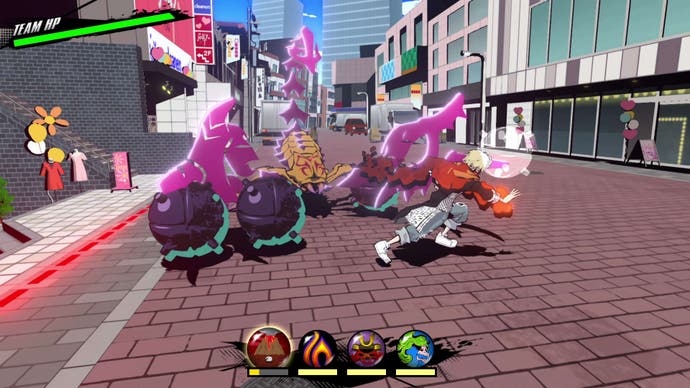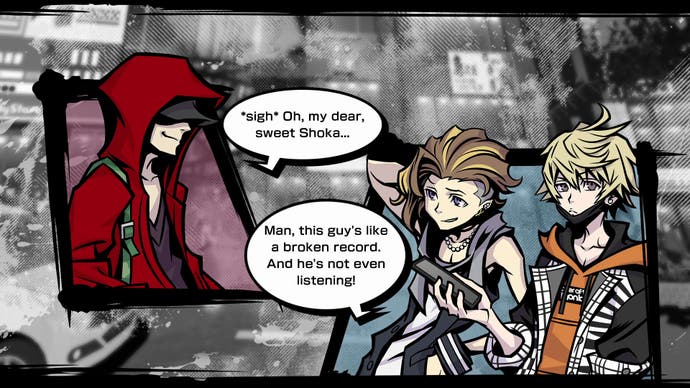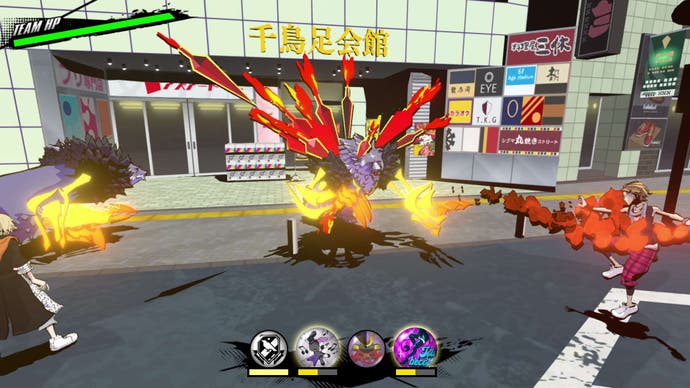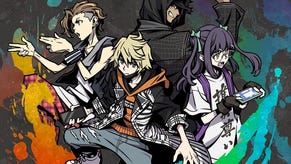The great Shibuya lifestyle RPG returns in Neo: The World Ends With You
No badge?
The World Ends with You came out in 2007 - I just checked - but it still feels a bit like the future. Or maybe it feels like a future. This was an action RPG from Square-Enix perfectly designed around the Nintendo DS, and using a lot of that wonderfully odd console's wonderfully odd features. You tapped the screen to move around and work your way through menus, sure, but when it came time for a battle you controlled different characters on different screens, hectically working away with different input methods as the action hockey-pucked back and forth between your allies. Even when you weren't battling, the game was unusual: an RPG set in modern-day Shibuya, and featuring a cast of stylish teenagers drawn into a deadly set of challenges. Each day a new hurdle: follow clues, solve puzzles and fight monsters if you want to stay alive. Quest givers wore hoodies. Your attack types revolved around pin-badges that you collected. Vital info was texted to you on your flip phone. You could read the minds of passing strangers, delving into a timely world of crushes and workday worries.
It was a game that one initially couldn't see working on anything but the DS, but this is Square-Enix, of course, so ports to everything from smartphones to the Switch ensued, all losing the second screen and a little of the strange magic with it. Now the game has a proper follow-up, in the form of Neo: The World Ends With You, which is headed to Switch and PS4 in July, then the Epic Games Store later this summer. No second screen, but has the magic been rekindled?
Based on a ninety minute playthrough of the game's first two levels, or days, things seem rather good. The biggest surprise here is probably the shift to proper 3D: as you explore Shibuya the skyscrapers now rise high above you, and you can move inside their foyers, climbing stairs and discovering alleyways. You can't rotate the camera with the right stick, but the placement of the roving viewpoint is smart and cinematic. A lot of thought has gone into staging each area, whether it's the low wide-screen tracking shot that follows you across the famous scramble crossing, or the side-on view of Dogenzaka Hill in which you are framed from a distance.
Anyway, here's a question: curry or ramen? That's the first big decision you have to make in Neo: The World Ends with You, and it's the key, I reckon, to the second biggest surprise. Namely, if you're coming from the first game, this will all seem warmly familiar indeed - a beautiful slice of virtual tourism that gives itself to the cultures and subcultures, the niches and trends of Tokyo's streets. Where to eat, what to dress, which emojis to use on your phone chats - these are the sort of things that The World Ends with You takes very seriously, and rightly so. You may follow two new heroes on this adventure, but their preoccupations remain the same as Shibuya teenagers' preoccupations always are. The game's colourful and stylish and intoxicating. It's fantastic to see an action RPG spin itself out of such modern threads.
And the adventure, from what we've seen so far, is very similar too. Our two heroes are stuck in another game with the mysterious reapers, who give their teams a challenge every day, sending them scurrying around the city and fighting monsters. You still have a bit of gentle puzzle-solving to be getting on with, and you still get to read people's minds and chain together enemies on the over-world map, triggering kinetic badge-powered battles.




The battles themselves may miss the whole hockey-puck movement between the two screens, but they retain a wonderfully cumulative kind of aggression, and are given soul by truly beautiful hit-pauses. You use different face buttons and triggers to use the various badge powers you've equipped, and if you chain attacks together well enough, switching back and forth between party members as you go, you get to build the Groove meter and eventually activate a special move. Those badges mean even basic attacks are pretty special, though. From flames to lightning bolts there are plenty of returning favourites, and the badges level up and evolve through use - although, as before, you still have to work around their cooldowns.
The plot that unfolds over the first few missions is already filled with charm and clever ideas - one of the two new leads can actually travel inside strangers' heads and help them resolve their memories via a little thumbstick-twiddling mini-game - but the overall impression is of a rich blur of colour and energy, a game that's generous in its recreation of both a place and a specific youth culture. Can't wait for this one.



